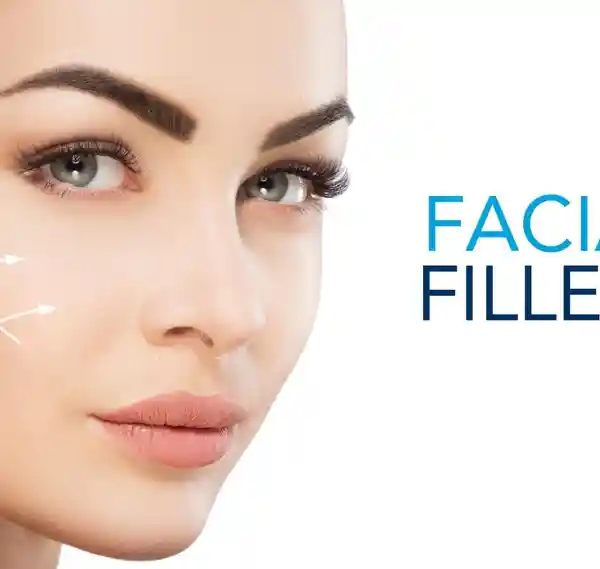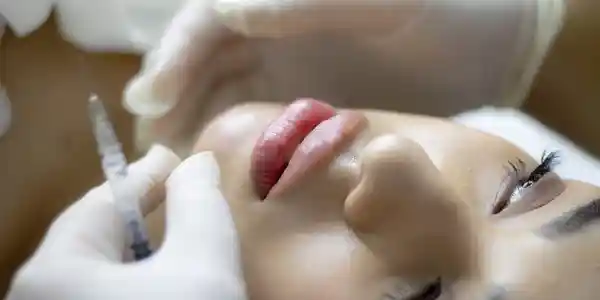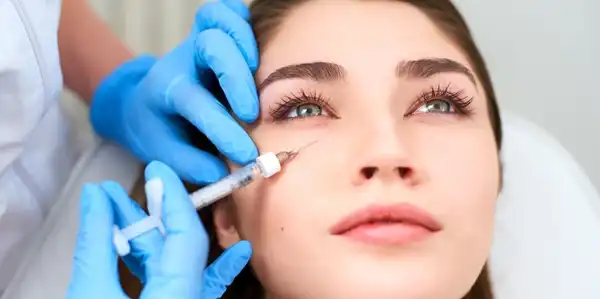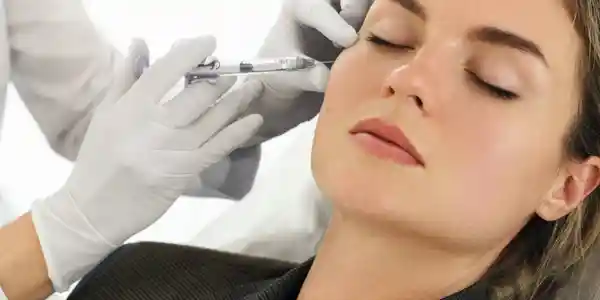Introduction:
With the use of cosmetic face fillers, people may now attain youthful, refreshed looks without undergoing invasive surgery, revolutionizing the aesthetics industry. The American market today offers a wide variety of modern fillers, so it’s critical to comprehend each one’s special qualities, advantages, and possible drawbacks. This article compares and contrasts the latest generation of cosmetic face fillers, looking at their composition, effectiveness, and durability.

Benefits vs. other types of fillers

When compared to conventional fillers, advanced cosmetic face fillers provide a number of advantages, such as:
Greater longevity: Extended durability is one of the main advantages of improved fillers. Advanced fillers, like calcium hydroxyapatite (CaHA) and poly-L-lactic acid (PLLA) ( Radiuses and sculpture are the most well-known brand for these fillers), can produce results that last longer—typically up to two years or longer—than regular hyaluronic acid fillers, which are usually temporary. By delaying touch-up treatments longer, this longer duration benefits patients by saving money and providing convenience.
Natural-Looking Results: Modern fillers are designed to blend in perfectly with surrounding tissues, giving you results that look natural. Modern fillers provide gradual volume and improvement, improving the overall appearance without being unduly boosted, in contrast to some conventional fillers that could give the illusion of being “overfilled” or fake.
Versatility: Advanced fillers are adaptable and can be used to treat a variety of aesthetic issues, such as deep folds and facial contours, as well as fine lines and wrinkles. These fillers can be designed to match the specific needs and goals of each patient, offering individualized treatments for optimal outcomes, whether they are used for shaping jawlines, volumizing cheeks, or plumping lips.
Comparison with Other Types of Fillers

Hyaluronic Acid Fillers
Although hyaluronic acid fillers continue to be widely used due to their safety record and adaptability, their lifespan is typically less than that of advanced fillers. Hyaluronic acid fillers may also not stimulate collagen as much as certain sophisticated fillers, which would restrict their ability to promote long-term rejuvenation.
Collagen-Stimulating Fillers
Certain fillers, such PLLA and certain calcium hydroxyapatite fillers, have the advantage of stimulating the synthesis of collagen in the skin, making them superior to conventional hyaluronic acid fillers. These collagen-stimulating fillers enhance the initial volumizing effects of the filler by gradually improving the quality and texture of the skin over time.
Synthetic Fillers
Long-lasting results are provided by synthetic fillers, such as polymethylmethacrylate (PMMA) One of the most well-known brand names for PMMA-based fillers is (Bella fill) , however there is a greater chance of problems, such as granuloma formation and migration. Even though they last about as long, advanced fillers are usually thought to be safer and more biocompatible, which lowers the possibility of negative responses.
Differences between each of them
Every cutting-edge facial filler has certain qualities of its own, such as :
Advanced fillers can be composed of biocompatible materials such as poly-L-lactic acid, calcium hydroxyapatite, hyaluronic acid, or other.
Texture: While some fillers are thinner and more resilient for augmentation of deeper tissue, others are smoother and more suitable for finer lines.
The ideal injection method varies based on the viscosity of the filler and the intended application.

Consistency and Viscosity
The density and viscosity of each filler vary, affecting which treatment locations and injection procedures they work best for. To illustrate:
HA fillers: While certain types of HA fillers are thinner and better suited for shallow tissue augmentation, others are smoother and more suitable for delicate areas and fine wrinkles.
CaHA fillers: CaHA fillers are superior to HA fillers for volumizing larger parts of the face, like the cheeks and temples, because of their thicker consistency.
Deeper tissue augmentation and facial sculpting are achieved with PLLA fillers, which usually have a thicker consistency.
Duration of Results
The duration of effects differs amongst fillers:
HA fillers: Depending on the particular product and injection site, results usually last a few months to a year.
CaHA fillers: CaHA fillers have the potential to produce results that last for at least 12 to 18 months.
PLLA fillers: Over time, PLLA fillers encourage the creation of collagen, leading to a progressive improvement that may persist for up to two years.
Treatment Areas
Specific treatment locations can be catered for with advanced fillers:
HA fillers: HA fillers are adaptable and can be used to address wrinkles, volume loss, and fine lines on the face.
CaHA fillers: CaHA fillers are frequently utilized to contour and volumize bigger areas, like the jawline, cheeks, and temples.
Fillers made of polylactic acid (PLLA):These are mostly utilized for facial contouring and deep tissue augmentation, especially in areas where there has been a considerable loss of volume.

Juvederm and Restylane are the most well known brands used for these fillers .
Risks
Although experienced experts can safely deliver cosmetic face fillers, there are significant hazards associated with their use such as:
Bruising and Swelling: Common adverse effects after injection include temporary bruising, swelling, and redness at the injection site, which usually go away in a few days.
Responses Allergic: Filler materials may cause allergic responses, which are uncommon but can cause swelling, redness, or itching that may need medical treatment.
Infection: There is a chance of infection at the injection site with any operation requiring injections. Aseptic technique and proper sterilization are crucial to reducing this danger.
Rarely, fillers may result in nodules or lumps beneath the skin that need to be further examined and treated by a medical professional.
Vascular complications can arise from filler injections accidentally damaging blood vessels, which can cause necrosis of the tissue and vascular compromise. In order to reduce the likelihood of problems, prompt detection and therapy are essential.

What chemicals they are made of Hyaluronic Acid (HA) Fillers
What gives the skin its volume and hydration is a naturally occurring molecule called hyaluronic acid. By means of a cross-linking procedure, HA fillers are created, yielding an injectable gel-like material that acts as a plumping agent and wrinkle reducer. HA fillers that are often used are: Allergan produces Juvéderm, a line of injectables that includes Volume, Volute, and Volvelle, each with varying hyaluronic acid concentrations designed for particular treatment locations. Hyaluronic acid cross-linking is used in Restylane, a product made by Galderma, to give volume and smoothness. Some of the formulations of Restylane Lyft and Restylane Defyne are among the series.
Calcium Hydroxyapatite (CaHA) Fillers
The mineral-like substance known as calcium hydroxyapatite is present in teeth and bones. The long-lasting volume provided by CaHA fillers is achieved by stimulating the formation of collagen by the suspension of microspheres in a gel carrier.
Poly-L-Lactic Acid (PLLA) Fillers
Biodegradable synthetic poly-L-lactic acid promotes collagen synthesis and tissue regeneration. PLLA fillers produce outcomes that look natural by gradually adding volume to the skin over time. One well-known PLLA filler is:
Galderma also makes Sculpture, an FDA-approved treatment for shallow to deep face creases and folds that restores facial volume through the use of poly-L-lactic acid microparticles.
Companies that make them each:
Modern cosmetic facial fillers are produced by a number of businesses, such as:
Allergan: Well-known for brands including Volume and Juvéderm.
Galderma: Maker of Sculpture and Restyling.
Merz Aesthetics: Creator of Balloter and Radiuses.
How long they last in the body each
The length of effects varies from several months to several years for various sophisticated fillers. Longevity is influenced by various factors such as the type of filler used, the method of injection, and the metabolism of each individual.
Juvéderm:
Duration: Juvéderm fillers normally last anywhere from six months to two years, depending on the particular substance and injection site.
Restylane:
Duration: The average lifespan of restylane fillers is six to eighteen months.
Products like Restylane-L, Restylane Silk, and Rest lane Lyft, each designed to treat particular aesthetic difficulties with varied lifespan, are part of the Restylane family of fillers.
Radiuses:
Duration: The benefits of Radiuses’ are known to endure for a long time; outcomes usually last for one to two years.
Radiuses’ is made of calcium hydroxyapatite microspheres, which, in contrast to hyaluronic acid fillers, encourage the creation of collagen and gradually give structural support.
Their various brand names

Several brand names, including the following, are used to promote advanced cosmetic face fillers:
Juvéderm: Contains goods such as Volume, Volvelle, and Volume.
Restylane: Provides several fillers, such as Rest lane Defyne and Restylane Lyft. Offers a range of fillers, including Restylane Lyft and Restylane Defyne
Radiesse: renowned for its enduring volumizing properties.

European and other foreign counter-parts
Comparable sophisticated cosmetic face fillers that are approved in the US can be found in European and other international markets. Regulatory variations in terms of approval procedures and labeling requirements may exist, even if these goods may have comparable ingredients and effects.
Conclusion:
Making well-informed decisions on aesthetic treatments requires an awareness of the subtleties of the most cutting-edge cosmetic face fillers that have been approved for the US market. People may choose the best filler for their unique needs and objectives by weighing the advantages, variations, dangers, chemical compositions, manufacturers, longevity, brand names, and foreign equivalents. This will guarantee results that are both safe and satisfactory.
Comparing sophisticated cosmetic face fillers entails assessing their advantages, variations, dangers, chemical makeup, producers, shelf lives, brand names, and global equivalents. By being aware of these variables, people can work with their healthcare providers to safely and successfully attain the cosmetic results they want by making educated selections.
- All Posts
- Uncategorized

Dr. Daniel Davidson, MD, MBA Introduction: With the use of cosmetic face fillers, people may now attain youthful, refreshed looks…

Dr. Daniel Davidson, MD, MBA Introduction: A single-location business’s worldwide expansion is a big project that needs careful preparation, smart…

Dr. Daniel Davidson, MD, MBA Introduction: Creating a successful licensable brand can be a profitable path for growth and expansion…
